1. Overview
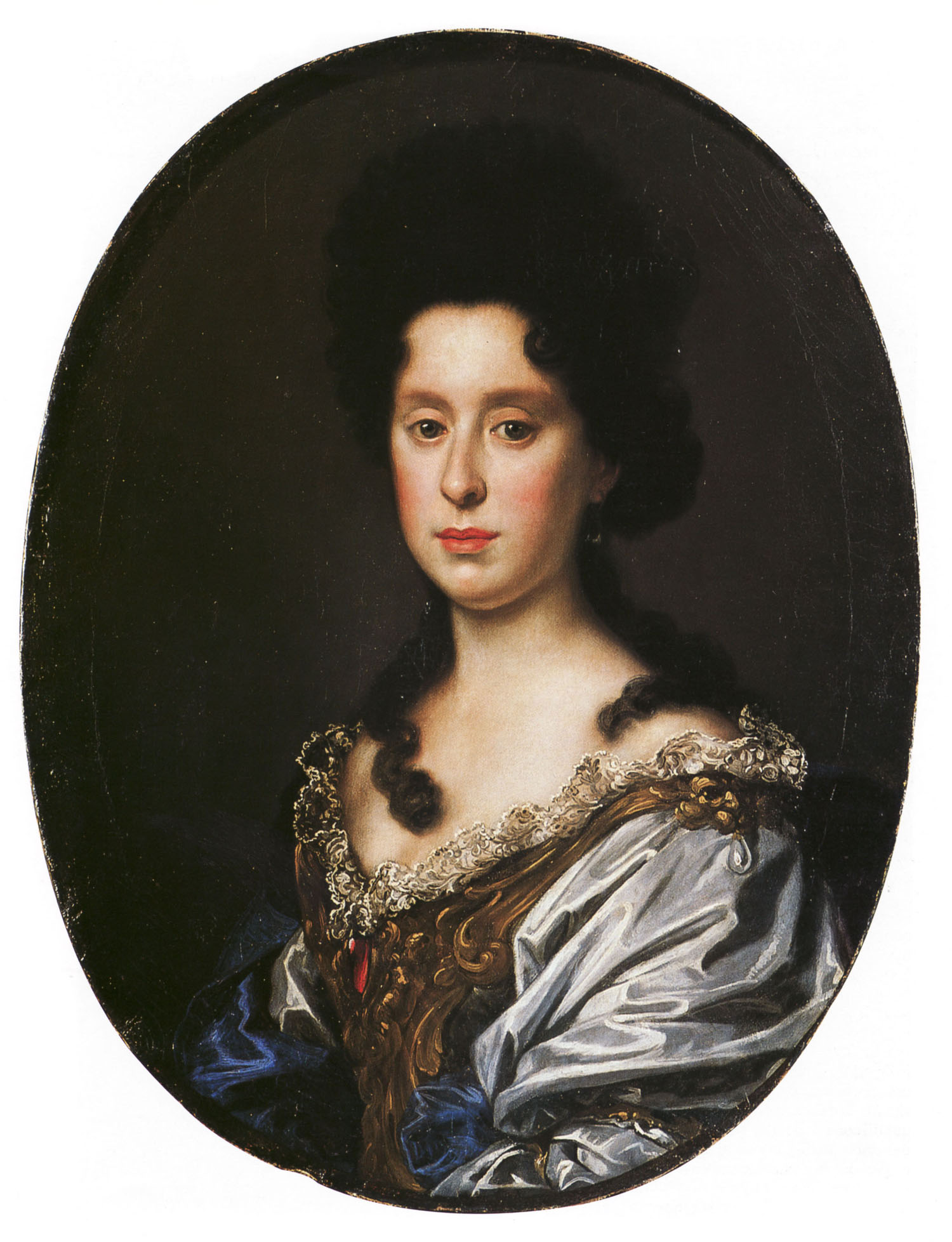
Anna Maria Luisa de' Medici (1667-1743) was a prominent Italian noblewoman, serving as the last lineal descendant of the main branch of the House of Medici. A significant patron of the arts, her most enduring contribution was ensuring the preservation of the vast Medici art collection for the Tuscan state. This immense cultural heritage, encompassing the contents of the Uffizi, Palazzo Pitti, and the Medici villas, along with her own Palatine treasures, was bequeathed under the strict condition that no part of it could ever be removed from Florence, the capital of the grand ducal state. Her actions laid the groundwork for future public access to these collections, contributing to Florence's lasting cultural and economic vitality through tourism and the arts.
2. Early Life and Family Background
Anna Maria Luisa's early life was marked by her distinguished but tumultuous family environment, deeply influenced by the strained relationship between her parents and her upbringing under her paternal grandmother.
2.1. Birth and Childhood
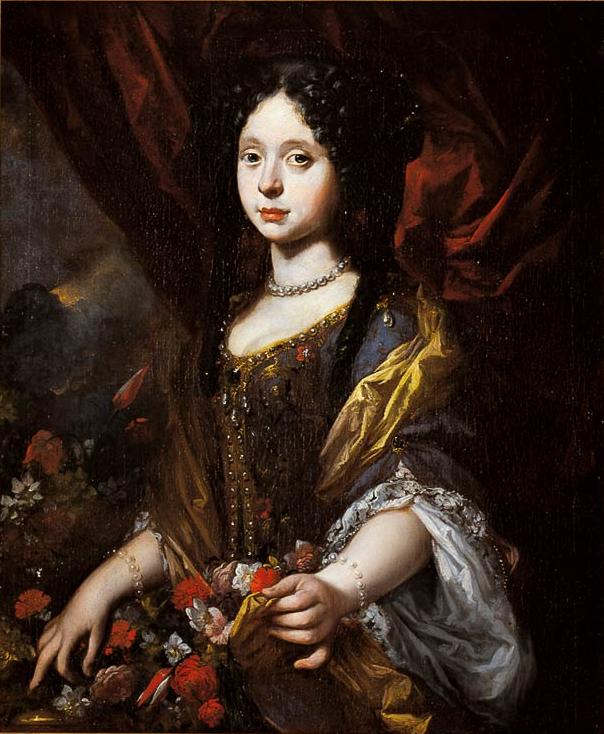
Anna Maria Luisa de' Medici was born in Florence on August 11, 1667. She was the only daughter and second child of Cosimo III de' Medici, Grand Duke of Tuscany, and his consort, Marguerite Louise d'Orléans. Her birth occurred despite her mother's attempts to induce a miscarriage. She was named after her maternal aunt, Anne Marie Louise d'Orléans, Duchess of Montpensier. Her elder brother was Ferdinando de' Medici, Grand Prince of Tuscany, and her younger brother was Gian Gastone de' Medici, Grand Duke of Tuscany.
2.2. Family Dynamics and Early Influences
Her parents' marriage was notoriously quarrelsome, with Marguerite Louise frequently humiliating Cosimo III. On one occasion, she publicly branded him "a poor groom" in front of the Papal nuncio. This intense animosity persisted until December 26, 1674, when, after all reconciliation efforts failed, a distressed Cosimo permitted his wife to depart for the Convent of Montmartre in France. The agreement signed upon her departure revoked her privileges as a petite fille de FranceFrench (a title for daughters of French royalty) and stipulated that all her assets would be inherited by her children upon her death. Cosimo granted her a pension of 80.00 K FRF. Marguerite Louise abandoned Tuscany in June 1675, and Anna Maria Luisa, then less than eight years old, never saw her mother again. Although Cosimo doted on his daughter, she was primarily raised by her paternal grandmother, Vittoria della Rovere, which shaped her character, with contemporaries noting her traits to be a combination of her father's and grandmother's.
3. As Electress Palatine
Anna Maria Luisa's tenure as Electress Palatine marked a significant period of her life, during which she adapted to a new court, faced personal challenges, and made lasting contributions to the arts and culture of the region.
3.1. Marriage and Move to Düsseldorf
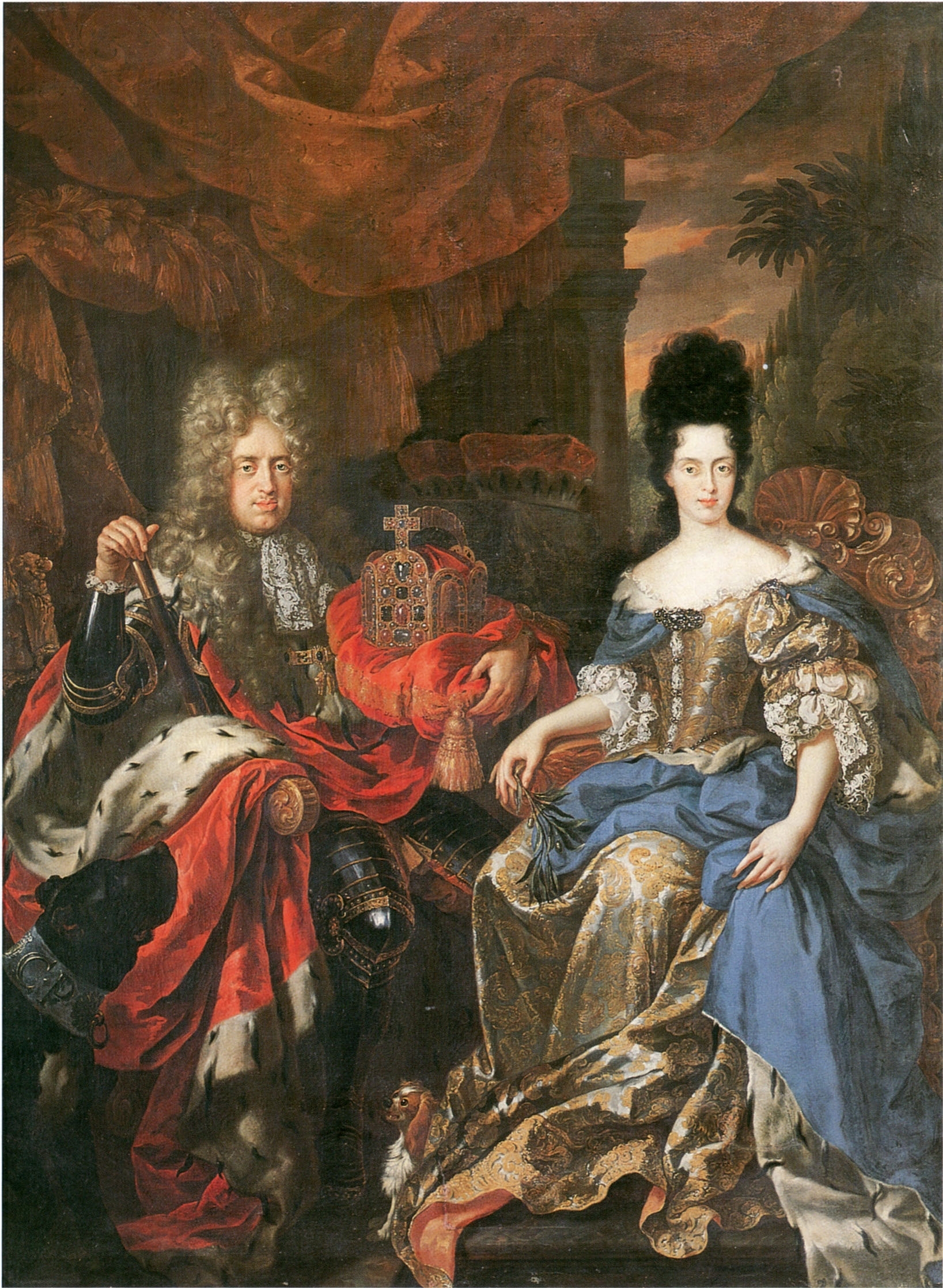
Marriage negotiations for Anna Maria Luisa were extensive and varied. In 1669, she was considered as a potential bride for Louis, le Grand Dauphin, the heir-apparent of Louis XIV of France, though her father, Cosimo III, did not fully support a French marriage, and she was ultimately rejected. Cosimo then offered her to Peter II of Portugal, but his ministers declined, fearing she might have inherited her mother's temperament. After refusals from Portugal, France, Spain, and Savoy, James II of England proposed his brother-in-law, Francesco II d'Este, Duke of Modena. However, Anna Maria Luisa considered a duke too low in protocol for the daughter of a grand duke. Finally, Leopold I, Holy Roman Emperor, suggested Johann Wilhelm, Elector Palatine. To facilitate this union, the Elector Palatine secured the style of Royal Highness from the Holy Roman Emperor for Cosimo III in February 1691, a significant diplomatic achievement for Tuscany.
Johann Wilhelm and Anna Maria Luisa were married by proxy on April 29, 1691. A contemporary description at the time of the accompanying festivities noted her physical attributes: "In her person, she is tall, her complexion was fair, her eyes large and expressive, both those and her hair were black; her mouth was small, with a fullness of the lips; her teeth were as white as ivory." She departed for Düsseldorf, her husband's capital, on May 6, 1691, accompanied by her younger brother, Gian Gastone. Johann Wilhelm met her in Innsbruck, where they officially married. The Palatinate she arrived in was heavily affected by the ongoing Nine Years' War, during which Louis XIV's forces had assaulted the region on behalf of his brother, Philippe I, Duke of Orléans, occupying the city of Philippsburg.
Anna Maria Luisa became pregnant in 1692 but suffered a miscarriage. While some historians incorrectly believed she contracted syphilis from the Elector, leading to their childlessness, modern scientific examination of her remains found no traces of the disease. Despite the lack of offspring, Anna Maria Luisa and Johann Wilhelm shared a harmonious marriage.
3.2. Patronage of Arts and Culture
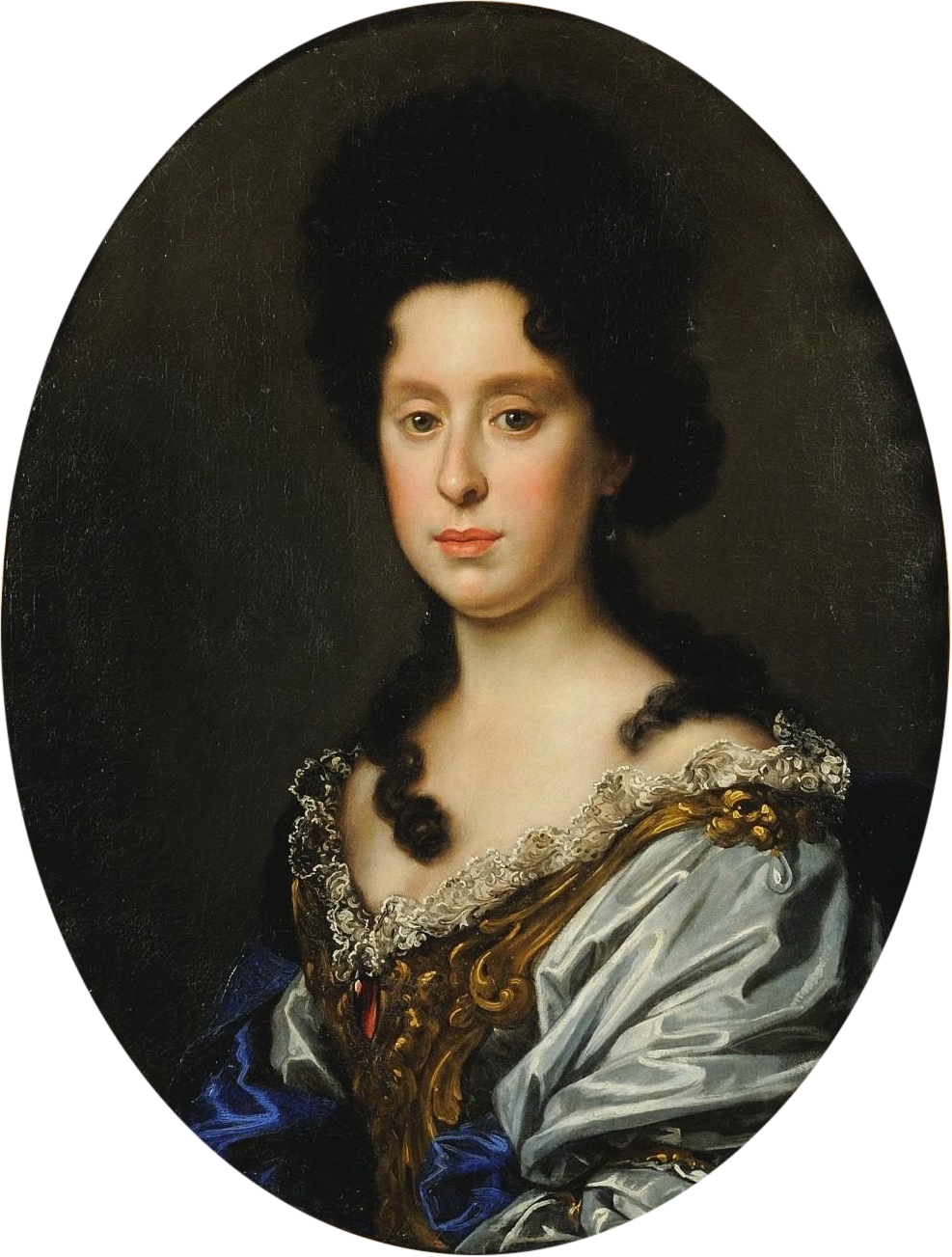
As Electress, Anna Maria Luisa actively engaged in the cultural life of the Palatinate court. She enjoyed balls, musical performances, and various festivities. Johann Wilhelm commissioned a theatre for her, where the comedies of French playwright Molière were performed. Her significant patronage of numerous musicians elevated the contemporary Palatine court to renown as an international center of music. She invited Fortunato Chelleri to the court and appointed him maestro di cappellaItalian. The Electress also sponsored Agostino Steffani, a renowned polymath, from his arrival in Düsseldorf in 1703 until her return to Tuscany. The Conservatorio Luigi Cherubini library in Florence still preserves two editions of Steffani's chamber duets.
Anna Maria Luisa also played a role in her family's marital arrangements. At her father's instigation, she arranged the marriage of her younger brother, Gian Gastone, to Anna Maria Franziska of Saxe-Lauenburg, heiress of the eponymous duchy, in Düsseldorf on July 2, 1697. However, Gian Gastone's wife repulsed him, leading to their separation in 1708.
3.3. Social and Religious Policies in the Palatinate
In 1697, the Peace of Ryswick brought an end to the Nine Years' War, leading to the withdrawal of French troops from the Electoral Palatinate, and Johann Wilhelm received the County of Megen. Following the revocation of the Edict of Nantes in 1685, which had previously granted rights to Calvinists, approximately 2,000 French Huguenots emigrated to the Electoral Palatinate. Johann Wilhelm, facing criticism for his treatment of Palatine Protestants from the Elector of Brandenburg, introduced a Religionsdeklaration in 1705, which sanctioned religious freedom across the state.
4. Tuscan Succession Crisis
The question of the Tuscan succession was a central political issue during Anna Maria Luisa's life, as the male line of the Medici faced extinction, placing her in a pivotal and complicated position.
4.1. Background of the Succession Dispute
As the Medici male line appeared to be dying out, Cosimo III, Anna Maria Luisa's father, sought to alter the male-only Tuscan line of succession to allow his daughter to inherit the Grand Duchy. This plan met with fierce opposition from various European powers. Charles VI, Holy Roman Emperor, Tuscany's nominal feudal overlord, agreed to the change but only on the condition that he would succeed her. Cosimo and Anna Maria Luisa disagreed with this proposal, causing the "Tuscan question" to remain unresolved for some time.
Years later, as the succession issue became more pressing, Cosimo III's brother, Cardinal Francesco Maria de' Medici, Duke of Rovere and Montefeltro, was released from his vows and compelled to marry Eleanor Gonzaga, Duchess of Rovere and Montefeltro, the elder daughter of Vincenzo Gonzaga, Duke of Guastalla, in 1709. Anna Maria Luisa urged her uncle to take care of his health and "give us the consolation of a little prince." However, he died two years later without issue, extinguishing a significant hope for a male heir.
4.2. Efforts to Secure Succession
Following the death of his heir apparent, Ferdinando, in 1713, Cosimo III deposited a bill in the Senate, Tuscany's titular legislature. This bill declared that if both Cosimo and his new heir apparent, Gian Gastone, were to predecease Anna Maria Luisa, she would ascend the throne. Charles VI was infuriated by this, asserting that the Grand Duchy was an imperial fief, and thus only he possessed the prerogative to alter the laws of succession. Further complicating matters, Elisabeth Farnese, heiress of the Duchy of Parma and the second wife of Philip V of Spain, claimed a right to Tuscany as a great-granddaughter of Margherita de' Medici.
In May 1716, Charles VI, whose stance on the issue constantly shifted, informed Florence that Anna Maria Luisa's succession was unquestioned, but insisted that Austria and Tuscany must soon agree on which royal house would follow the Medici. In June 1717, Cosimo declared his wish for the House of Este to succeed Anna Maria Luisa. Charles VI had previously offered Cosimo III territorial compensation, in the form of the State of Presidi, for a quick decision but later reneged. By 1718, Charles VI repudiated Cosimo's decision, declaring a union of Tuscany and Modena (the Este lands) unacceptable, leading to a stalemate between them.
On October 25, 1723, six days before his death, Cosimo III issued a final proclamation, asserting Tuscany's independence, decreeing that Anna Maria Luisa should succeed uninhibited after Gian Gastone, and reserving the right for the Grand Duke to choose his successor. Unfortunately for Cosimo, this proclamation was completely ignored by the European powers.
In 1736, during the War of the Polish Succession, Infante Charles (who had been chosen as the Tuscan heir in 1718) was removed from Tuscany as part of a territorial exchange, and Francis III of Lorraine was named his successor instead. In January 1737, the Spanish troops, who had occupied Tuscany since 1731, withdrew, and 6,000 Austrian soldiers took their place.
5. Return to Florence and Later Life
After the death of her husband, Anna Maria Luisa returned to Florence, where she navigated complex family relationships and the declining state of the Medici court during her brother's reign.
5.1. Widowhood and Return to Florence
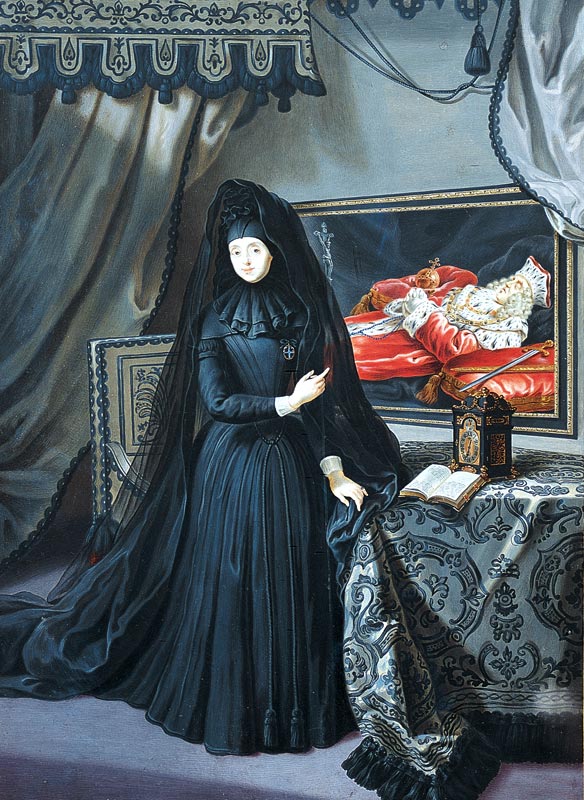
Johann Wilhelm, Elector Palatine, died in June 1716. His widow, Anna Maria Luisa, returned to Florence in October 1717. Her relationship with Violante Beatrice, her brother Ferdinando's widow and Dowager Grand Princess, was not amiable. Upon learning of Anna Maria Luisa's intention to return, Violante Beatrice prepared to depart for Munich, her brother's capital. However, Gian Gastone wished her to stay, and she did. To prevent quarrels over precedence between the two ladies, Cosimo III defined Violante Beatrice's status just before Anna Maria Luisa's arrival by appointing her Governess of Siena.
On April 4, 1718, Great Britain, France, and the Dutch Republic (later joined by Austria) selected Infante Charles of Spain, the elder child of Elisabeth Farnese and Philip V of Spain, as the Tuscan heir, with no mention of Anna Maria Luisa. By 1722, she was not even acknowledged as heiress, and Cosimo was reduced to a spectator at the conferences concerning Tuscany's future. Amidst these political developments, Marguerite Louise, Anna Maria Luisa's estranged mother, died. Contrary to the 1674 agreement, her valuables were not bequeathed to her children but to the Princess of Epinoy, a distant relative.
5.2. Relationship with Gian Gastone and Court Life
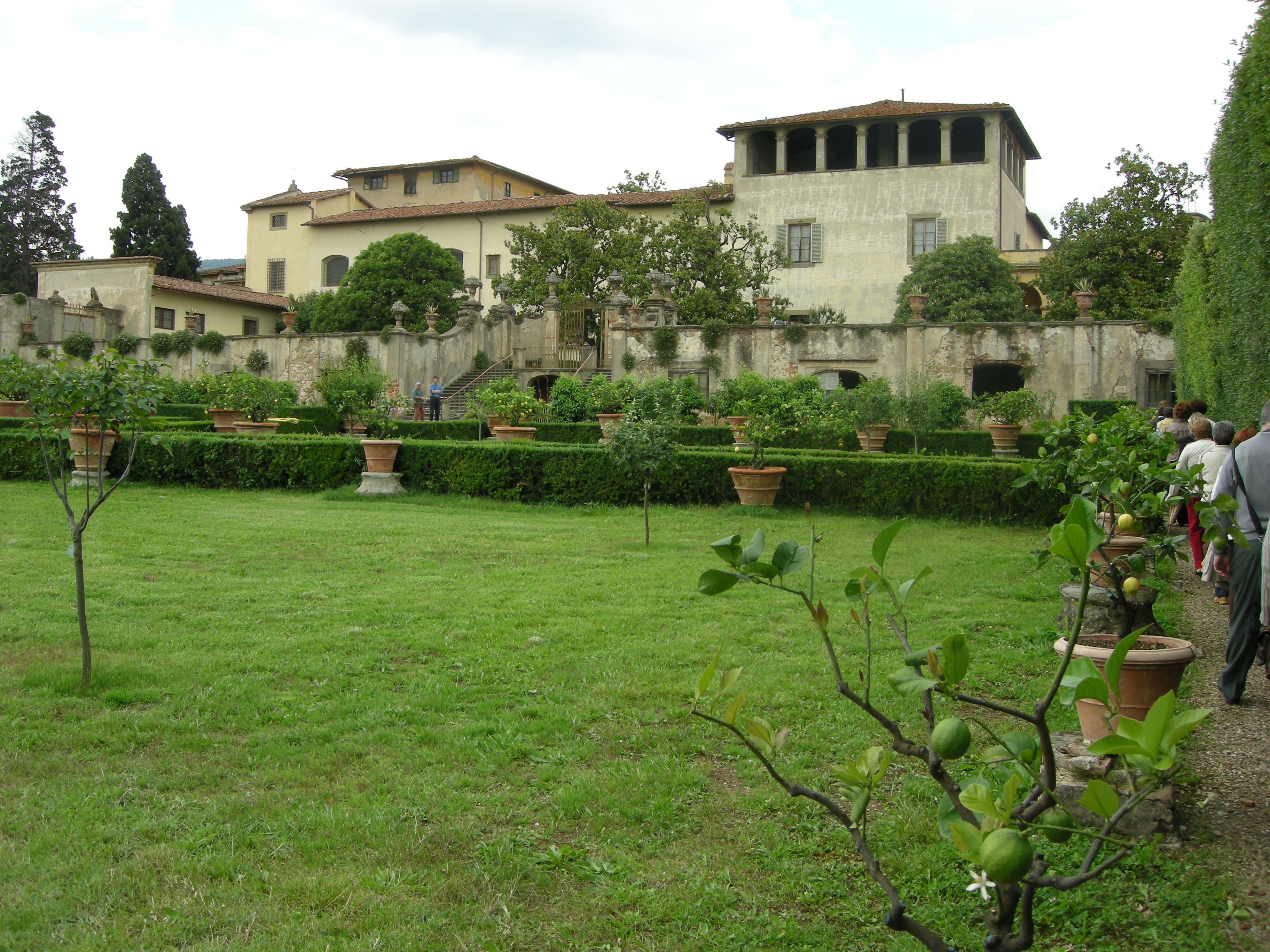
Gian Gastone, who became Grand Duke upon Cosimo III's death, and Anna Maria Luisa were not on good terms. He despised her for arranging his unhappy marriage with Anna Maria Franziska of Saxe-Lauenburg, while she detested his liberal policies, such as repealing all of their father's anti-Semitic statutes, which he seemed to enjoy specifically to upset her. As a result, Anna Maria Luisa was compelled to abandon her apartment in the left wing of the Palazzo Pitti and relocate to the Villa La Quiete. She extensively refurbished La Quiete's house and gardens with the assistance of Sebastiano Rapi, the gardener of the Boboli Gardens, and architects Giovanni Battista Foggini and Paolo Giovanozzi. Between 1722 and 1725, she further embellished the villa by commissioning twelve statues of various religious figures.
Despite their mutual dislike, Anna Maria Luisa and Violante Beatrice jointly attempted to improve Gian Gastone's poor public image. Rumors circulated that the Grand Duke had died, as public sightings of him were rare. To dispel these rumors, Anna Maria Luisa compelled him to make his last public appearance in 1729, on the feast day of John the Baptist, the patron saint of Florence. The RuspantiItalian, Gian Gastone's morally corrupt entourage, hated Anna Maria Luisa, and she, in turn, detested them. Violante Beatrice tried to extract the Grand Duke from their influence by organizing banquets. However, his conduct at these events was so crude-he repeatedly vomited into his napkin, belched, and told offensive jokes-that attendees often quickly departed. These attempts to reform Gian Gastone's behavior ceased upon Violante Beatrice's death in 1731.
6. Death and Legacy
Anna Maria Luisa de' Medici's final years were characterized by a reclusive life and significant philanthropic endeavors, culminating in her most profound and lasting contribution: the preservation of the Medici art collection for future generations.
6.1. Circumstances of Death
Gian Gastone died from "an accumulation of diseases" on July 9, 1737, surrounded by prelates and his sister, Anna Maria Luisa. The Prince de Craon, the Grand Duke's envoy, offered Anna Maria Luisa a nominal regency until Francis III could arrive in Florence, but she declined. Upon Gian Gastone's demise, all of the House of Medici's allodial possessions, including 2.00 M GBP in liquid cash, a vast art collection, robes of state, and lands in the former Duchy of Urbino, were conferred upon Anna Maria Luisa.
The "Lorrainers," as the occupying Austrian forces were called, were widely disliked by the Florentine populace. The Viceroy, Prince de Craon, whom Anna Maria Luisa disliked for his "vulgar" court, allowed her to live undisturbed in her own wing of the Palazzo Pitti. She lived in virtual seclusion, only occasionally receiving a select number of guests under a black dais in her silver-clad audience room.
Anna Maria Luisa de' Medici, Dowager Electress Palatine, died on February 18, 1743, reportedly from an "oppression on the breast." Sir Horace Mann, 1st Baronet, a British resident in Florence, noted in a letter that "The common people are convinced she went off in a hurricane of wind; a most violent one began this morning and lasted for about two hours, and now the sun shines as bright as ever..." With her death, the royal line of the House of Medici became extinct. Her will, completed just months prior, left 500.00 K GBP worth of jewelry to Grand Duke Francis and her lands in the former Duchy of Urbino to Marquis Rinuccini, her main executor and a minister under her father, Cosimo III. She was interred in the crypt within the Basilica of San Lorenzo, Florence, which she had helped to complete. Although not entirely finished at the time of her death, her testament stipulated that part of the revenue of her estate should "be used to continue, finish and perfect...the said famous chapel San Lorenzo."
6.2. The Family Pact and Preservation of Medici Collection
Anna Maria Luisa's single most enduring and significant act was the Patto di FamigliaItalian ("Family Pact"), signed on October 31, 1737. In collaboration with the Holy Roman Emperor and Francis of Lorraine, she legally willed all the personal property and immense art and treasure collection of the Medici family to the Tuscan state. This was done under the crucial condition that nothing from the collection was ever to be removed from Florence. This unprecedented act ensured that all the Medicean art and treasures, accumulated over nearly three centuries of political ascendancy, remained permanently in Florence. This commitment to public good and cultural heritage laid the foundation for institutions like the Uffizi Gallery, which was built by Cosimo the Great, the founder of the grand duchy, and made open to public viewing sixteen years after Anna Maria Luisa's death. Cynthia Miller Lawrence, an American art historian, argues that through this pact, Anna Maria Luisa proactively provisioned for Tuscany's future economy, particularly through tourism, by securing its cultural legacy.
6.3. Philanthropy and Final Contributions
In her later years, Anna Maria Luisa engaged in substantial charitable activities and continued her patronage of the arts. She financed and oversaw the construction of the Cappella dei Principi, a project started in 1604 by Ferdinando I de' Medici, Grand Duke of Tuscany, contributing approximately 1,000 crowns per week. She also donated a significant portion of her fortune to charity, amounting to 4.00 K GBP per annum. Her widespread donations benefited the poor and needy, reflecting her deep commitment to social welfare.
7. Historical Assessment
Anna Maria Luisa de' Medici's historical assessment primarily highlights her pivotal role in preserving Florence's artistic heritage, alongside a modern re-evaluation of past misconceptions about her life.
7.1. Positive Assessment and Cultural Impact
Anna Maria Luisa's most significant positive impact was undoubtedly her role in preserving the vast Medici artistic heritage. Through the Patto di FamigliaItalian, she secured an unparalleled collection of art and treasures for the public benefit, ensuring it would remain in Florence and be accessible to all. This act has profoundly contributed to Florence's enduring cultural and economic vitality, as the city remains a global center for tourism, largely due to the very collections she safeguarded, including those housed in the Uffizi Gallery. Her foresight ensured that the artistic legacy of her family would continue to enrich the lives of countless individuals for centuries to come, underscoring her commitment to cultural preservation and public access to art.
7.2. Misconceptions and Modern Reassessment
For a long time, it was widely believed that Anna Maria Luisa de' Medici died from syphilis, a misconception that influenced historical accounts of her life and the barrenness of her marriage. However, in 2012, after concerns related to the 1966 Flood of the Arno River, her remains were exhumed for scientific examination. This modern investigation found no traces of syphilis, definitively refuting the long-held belief about her cause of death. This scientific reassessment has led to a more accurate understanding of her health and life, contributing to a broader re-evaluation of historical facts related to the last Medici.
8. Ancestry
Anna Maria Luisa de' Medici's lineage connects her to prominent European noble houses, showcasing her place within the complex web of royal and ducal families.
- 1. Anna Maria Luisa de' Medici
- 2. Cosimo III de' Medici, Grand Duke of Tuscany
- 4. Ferdinando II de' Medici, Grand Duke of Tuscany
- 8. Cosimo II de' Medici, Grand Duke of Tuscany
- 9. Maria Magdalena of Austria
- 5. Vittoria della Rovere
- 10. Federico Ubaldo della Rovere, Duke of Urbino
- 11. Claudia de' Medici
- 4. Ferdinando II de' Medici, Grand Duke of Tuscany
- 3. Marguerite Louise d'Orléans
- 6. Gaston, Duke of Orléans
- 12. Henry IV of France
- 13. Marie de' Medici
- 7. Marguerite of Lorraine
- 14. Francis II, Duke of Lorraine
- 15. Christina of Salm
- 6. Gaston, Duke of Orléans